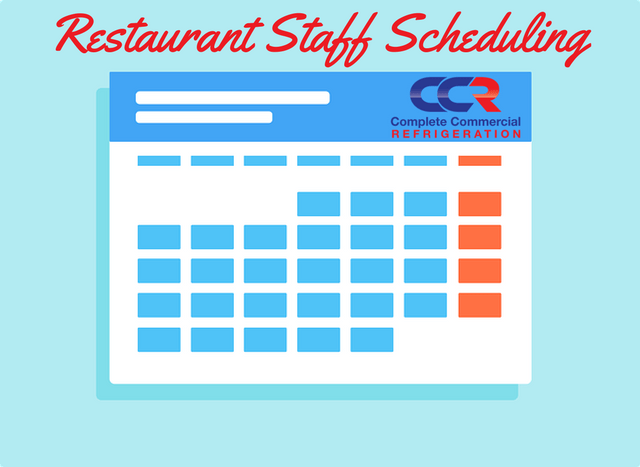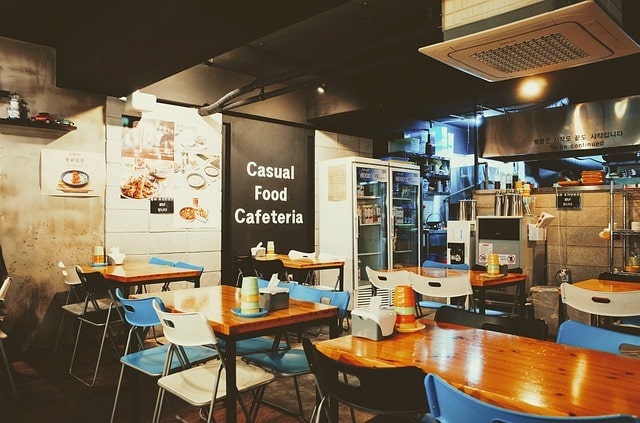Staff Scheduling for Restaurants
Staff Scheduling
Restaurant working hours are very delicate; considering how they serve food and the fact that there is no one fixed time range for people to eat or not to eat. This basically means that restaurant staffs have to always be available to attend to the endless stream of customers that walks in at all times. Seeing as the staff are human and are prone to get tired, it is logical for the restaurant owner to work out a scheduling system that puts the best fitted staff at the best fitted time and that gives staff some time off to rest or get refreshed.
This however is not as easy as it sounds; coming up with a perfect restaurant schedule entails accounting for a variety of different jobs including prep cook, bussers, servers, bartenders and a host of other jobs that all include a range of tasks. You would also have to consider that fact that workers have different needs, different hours that work better for them, different rules for overtime and other specifics that you would need to study before coming up with an effective employee schedule.

Keys to Effective Scheduling:
There are key things that should influence staff scheduling for restaurants; some of which are:
Be familiar with your team: You should have a comprehensive up to date list of every staff you have employed. Alongside their names on the list you should also write down their roles, relevant skills and certifications. You should also note whether they are part-time or full-time alongside any overtime restrictions.
Employee strength: You should pay attention to the strengths and weaknesses of your workers and let it determine where and when you would post them to a duty. Strengths like good communication skills or even impeccable professional relations will go a long way in determining which employee should be placed where and when. Harness these skills and schedule employees where they can perform better. You can let the list you put together earlier help you to schedule the employees according to their talents and skills. Repetitively fixing staff members in positions that do not suit their preferences or abilities may have an adverse effect on their optimism.
Flexibility & Empathy:
Consider time-off requests and work preferences: Give your employees a chance to communicate their preferred work hours; this will help foster a collaborative environment because since their choice is taken into consideration they will not feel exploited. Also giving your employees a chance to communicate what time suites best for them will help you place staff in work shifts that suit both parties. And this way availability will not pose a problem. They should however keep in mind that sometimes they may have to work other employee shifts to cover all open business hours.
Permit changes: You should also keep in mind that your schedule may not be fixed like that for a very long period because emergencies pop up and even conflicts between employees working the same shift may come up. At times like this, changing the schedule or changing the employees fixed to a shift become prudent. You should also allow employees to change what time they work when it becomes obvious that they may not give their best performance at that time. You can also allow them provide replacements or make the switch with another employee who happens to be best suited for that time; this way a good portion of the strain is taken off you.
Strategy:
Have a plan B: When you have a plan B you will not be launched into panic when circumstances beyond your control happen to render your schedule momentarily useless.
Take note of your busiest hours and get an average of the amount of business you get each day, this way you know what hours should have more than three staff on duty and what hours need just two or even one. Taking note of your restaurant’s average transaction and sales for ever day of the week and at different times of the day will give you a much better sense of how many employees you should fix for a particular day.
You should also take note of festive periods or other major events that may pop up near your restaurant. Even the weather should be considered for instance; during heavy snowstorms you will need more delivery drivers and less wait staff.
Additional Scheduling Tips:
 Also important to note are these other tips
Also important to note are these other tips
- Schedule your best staff for your busiest times and the lesser performing staff for less busy times. This way you get the best from every staff.
- Give every staff at least one opening to make money. To do this you should try to schedule your new and less senior staff to at least one money-making shift on the schedule every week so they can learn and to also keep them satisfied.
- Try to give every employee a day off whenever possible. This way they will not be overworked.
- Schedule the staff in a way that every staff gets to work at least one day shift. This will give them the chance to make more money and will also give them better experience.
- Don’t schedule staff to positions where they will have to close the night before and open the next morning. To avoid them being worked out.
- Treat requests as what they are; requests. The interest of the business should be prioritized, so when an employee tables his request and it looks like granting the request will turn out bad for the restaurant you reserve the right to reject it.
- Make sure you post the schedule at least two weeks before it becomes active. This way you get the employees prepared and also give them a chance to see how convenient the schedule is for them, and if it isn’t there still will be time to make adjustments if possible. Posting the schedule on time will also give the employees an opportunity to sort out whatever conflicts they may have amongst themselves.















